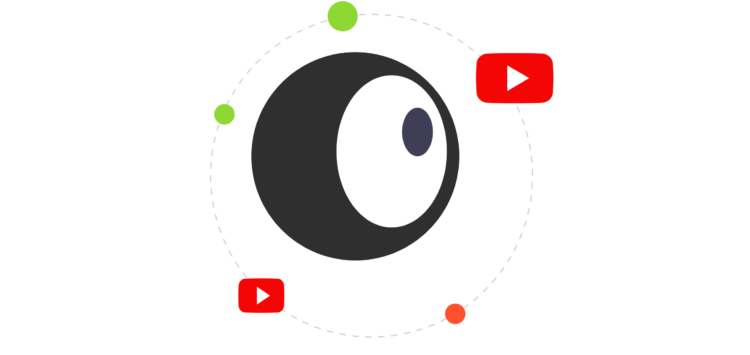Are YouTube Algorithms Addicted to State-Controlled Media?
Since the ban of Russia Today and Sputnik in the EU, the CrossOver project has been observing that CGTN Français, a Chinese State-run media, replaced the Russian fed content on Youtube when looking up the word “Russia”.
This investigation was led with EuDisinfoLab for the CrossOver project, in which Check First participates.
Read the full report in English – in French
Key findings
– Due to the war in Ukraine, the visibility of the RT France channel on YouTube had become increasingly important in between February 2022 and the ban of the channel in March.
– Looking specifically at the keyword “Russie”; we could observe that the ban of RT from YouTube was efficient, the channel not visibly showing up in search results and content recommendations just after the ban went into effect.
– RT France content was progressively replaced in terms of suggested content and in search results by videos from CGTN Français, a Chinese state international media channel.
– While monitoring the “Russie” keyword, not only did CGTN Français replaced RT France in terms of the amount of content presented, but it also took even more space in terms of video ranking, number of views and overall success.
– It seems that Russia-related videos of CGTN Français are more successful compared to other types of content pushed by the Chinese media.
Context: banning Russia Today
On 1 March 2022 the EU banned Russia Today (France) and Sputnik. Both of them were proven to be media outlets with strong ties to the Kremlin. The ban was ordered to stem disinformation and misinformation from Russia about the invasion of Ukraine, started on 24 February.
Technically, this ban means that content from Sputnik and Russia Today‘s channels in English, German, French, Spanish and Arabic is no longer allowed to be broadcast on TV networks and the internet (particularly on the big US platforms) when accessed from EU countries..
RT having been highly recommended by algorithmic content suggestion systems, its legal ban could redistribute content in an unprecedented manner. Focusing on search results and recommendation results on YouTube, the CrossOver project monitored the consequences of this ban on Belgian users querying the keyword “Russie” on YouTube.
Before the ban, RT enjoyed a certain popularity among Youtube users: in February 2022, RT France gained the most video views and subscribers since at least May 2019. Between 21 and 28 February, their Youtube channel gained 90 000 new subscribers right before the ban.
Data displayed on the Crossover Youtube search and suggest dashboard using the Youtube API (see our blogpost on methodology to understand differences between API monitoring and user simulation) shows that RT France has for a long time had a predominent place in the search results as people were looking for information about Russia, or in recommended content on that topic. A few days before the Russian invasion of Ukraine, according to the YouTube API data, RT France was the second most recommended channel for Belgian users.
The ban happened on 1 March and we could observe an immediate drop in RT‘s visibility on our dashboard.
RT France videos in the recommandations results from YouTube API for the keyword “Russie”
RT’s empty slot is quickly taken over by Chinese State content
While RT France’s content was suddenly hidden from European users, a rising stakeholder appeared in the search results and recommended videos, when looking for information by searching the keyword “Russie”: CGTN Français.
According to the Youtube API, the French version of the state-controlled China Global Television Network has become an increasingly important part of algorithmically recommended content both in search results and in recommendation results after the ban of RT France.
RT France VS CGTN Français videos recommandations though YouTube APIs
These findings are corroborated with the data retrieved by Socialblade: the channel CGTN Français gained its most subscribers since May 2019, between 28 February and 7 March (12 000 new subscribers). The weekly video views have increased almost continuously since 28 February. Besides gaining visibility, the channel managed to reach a broader audience.
Is the official YouTube API data a good representation of what users really see?
We compared the official Youtube API data to the data collected through our Raspberry Pis, disseminated in 7 different Belgian provinces.
Even if the results provided by the API and the minicomputers differ slightly: the general tendency suggesting that CGTN Français has become increasingly important in the recommended content after the RT ban seems confirmed in both analyses. Moreover, these slight differences underline the fact that there can be a gap between official results provided by the API and actual results people see from their homes.
This also raises the question of the correlation between the ban of RT France and the rise of CGTN Français: does it exist, and how can it be explained?
Can the rise of CGTN Français be explained?
For the sake of the investigation, we chose to focus on the keyword “Russie”. But if one looks at the bigger picture, it seems like this topic is the only one which positions CGTN Français in the top recommended videos. According to SocialBlade there is a huge discrepancy between videos.
Videos mentioning Russia have several thousand views, while those addressing other -but not less timely nor important- topics struggle to exceed 1000 views.
These elements raise the question of what is behind Youtube’s recommendation algorithm and how it shapes the spread of information, and indirectly affects user behaviour. Is YouTube mostly recommending CGTN Francais videos about Russia because of CGTN Français’ extra production about the topic? Is it due to CGTN Francais’ massive increase in views or perhaps because the videos were recently uploaded?
We asked Youtube, but got no answers.
Conclusion
On the topic of Russia, Belgian users of Youtube are more likely to be widely exposed to h state-controlled media, despite the ban of Sputnik and RT France.
The success of CGTN Français continues to thrive on the topic of the war in Ukraine and all associated themes, but it seems like it is the only matter of interest for CGTN Français viewers, seeing the prominence of the numbers of viewers on these videos compared to the ones which deal with other issues.
What was the path to such a success, and how did CGTN Français achieve to get a prominent place on Youtube in Belgium? Indicators seem to emerge, but the opacity of the algorithm makes it impossible to see a clear picture.




